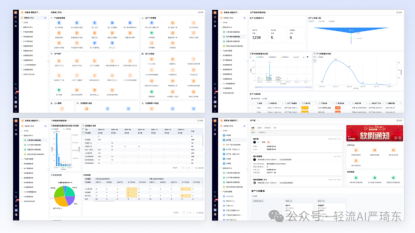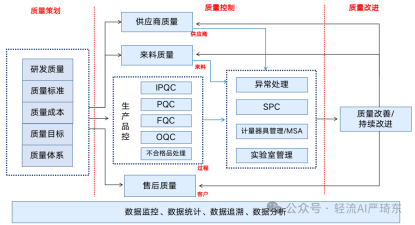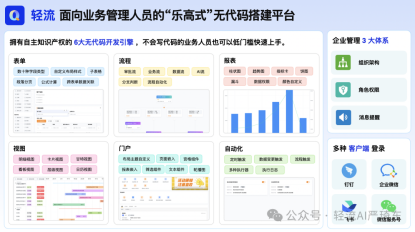A. Overall Description of Pain Points in Enterprise Project Management
Enterprise project management is fraught with numerous challenges that can impede the smooth execution of projects. These pain points not only affect the efficiency of operations but also have a direct impact on the bottom line. Some of the most prevalent pain points include:
- Lack of Transparency: Many enterprises struggle with a lack of visibility into project progress. Managers often find it difficult to obtain real - time information about task completion, resource utilization, and potential bottlenecks. This lack of transparency can lead to mismanagement and delays.
- Inefficient Communication: Poor communication is a major friction point in project management. With teams often spread across different locations and time zones, ensuring seamless communication can be a challenge. Miscommunications can result in errors, rework, and a breakdown in team collaboration.
- Resource Allocation Issues: Allocating resources effectively is crucial for project success. However, many enterprises face difficulties in accurately assessing resource requirements and distributing them across projects. This can lead to over - or under - utilization of resources, affecting both project timelines and costs.
- Data Management Challenges: In the digital age, data is a valuable asset. But enterprises often struggle with managing project - related data. Data may be scattered across different systems, making it difficult to access, analyze, and draw meaningful insights.
In summary, these pain points create a complex web of challenges for enterprises in project management, hindering their ability to deliver projects on time, within budget, and to the desired quality standards.
B. Case Analysis of Pain Points
1. Lack of Transparency
The lack of transparency in project management can have far - reaching consequences for enterprises. In a real - world scenario, a manager may be overseeing multiple projects simultaneously. Without clear visibility into each project's progress, it becomes difficult to make informed decisions. For example, if a particular task is falling behind schedule, the manager may not be aware of it until it's too late to take corrective action.
This lack of transparency is often compounded by the use of traditional project management methods, such as spreadsheets and manual reporting. These methods are time - consuming and prone to errors, making it difficult to get an accurate picture of the project status.
For instance, a large construction project was facing significant delays due to a lack of transparency. The project manager was relying on weekly reports from site supervisors, which were often incomplete and inaccurate. As a result, issues such as equipment breakdowns and material shortages were not being addressed in a timely manner. By the time the manager became aware of these problems, they had already caused significant setbacks to the project schedule.
2. Inefficient Communication
Inefficient communication can disrupt the flow of information within a project team, leading to misunderstandings and a lack of coordination. In a project environment, where multiple stakeholders are involved, clear and timely communication is essential. For example, if a change in project scope is not communicated effectively to all team members, it can result in confusion and wasted effort.
In a software development project, different teams such as developers, testers, and designers need to communicate regularly to ensure that the product meets the requirements. However, if communication channels are not well - established, important information may be lost or misinterpreted.
For example, a software company was working on a new application. The development team made a significant change to the codebase without informing the testing team. As a result, when the testers started their work, they encountered numerous bugs that could have been avoided with proper communication. This led to a delay in the product launch and increased costs.
3. Resource Allocation Issues
Resource allocation issues can have a direct impact on project performance. When resources are not allocated properly, projects may face shortages or surpluses, both of which can be detrimental. For example, if a project is under - staffed, it may not be able to meet its deadlines. On the other hand, over - allocation of resources can lead to inefficiencies and increased costs.
In a manufacturing project, the allocation of machinery and labor is critical. If a particular machine is over - utilized, it may break down, causing production delays. Similarly, if there are too many workers assigned to a task, it can lead to idle time and wasted resources.
For example, a furniture manufacturing company was working on a large order. Due to poor resource allocation, some of the production lines were over - loaded while others were under - utilized. This led to a backlog in production and a delay in delivering the order to the customer.
4. Data Management Challenges
Data management is a critical aspect of project management, but it is often overlooked. Enterprises generate a vast amount of data during the course of a project, including project schedules, resource utilization, and quality control data. However, if this data is not managed properly, it can be difficult to extract valuable insights.
In a marketing project, for example, data on customer demographics, campaign performance, and market trends is essential for making informed decisions. But if this data is stored in different systems and formats, it can be challenging to analyze and use effectively.
For instance, a marketing agency was running multiple campaigns across different platforms. Each platform generated its own set of data, which was stored in separate databases. The agency found it difficult to consolidate and analyze this data to evaluate the overall performance of the campaigns. As a result, they were unable to make data - driven decisions to optimize their marketing strategies.
C. Product Introduction
1. Traditional Project Management Software
Traditional project management software offers a range of features such as task scheduling, resource management, and progress tracking. These tools can help enterprises to organize projects and manage resources more effectively. They typically provide a centralized platform where project managers can assign tasks, set deadlines, and monitor progress.
However, these software solutions also have their limitations. They often require significant upfront investment in terms of software licenses, training, and implementation. Additionally, they may lack the flexibility to adapt to changing project requirements. For example, if a project scope changes, it may be difficult to modify the project plan in the traditional software without extensive re - work.
2. Collaboration Tools
Collaboration tools are designed to enhance communication and teamwork within a project. They allow team members to share files, communicate in real - time, and collaborate on tasks. These tools can be particularly useful for remote teams, as they bridge the geographical gap and enable seamless collaboration.
But collaboration tools also face challenges. They may not integrate well with other project management systems, leading to data silos. Moreover, if not used correctly, they can lead to information overload, as team members may be bombarded with too many notifications.
3. No - code Platform: Wingent
Wingent is a powerful no - code platform that can address many of the pain points in enterprise project management. It offers a range of features that can streamline project processes, enhance collaboration, and provide valuable insights through data analytics.
D. How Wingent Solves Enterprise Project Management Pain Points
1. Streamlining Project Processes
Wingent's no - code nature allows users to quickly build custom project management applications without the need for coding skills. This means that enterprises can tailor the platform to their specific project requirements, whether it's a construction project, a software development project, or a marketing campaign.
For example, in a manufacturing project, users can create a production management application using Wingent. They can define the production process, assign tasks to workers, and track the progress of each task in real - time. Workers can use their mobile devices to scan barcodes on products or work orders, which automatically updates the system with the completed tasks and the time taken. This real - time data collection and tracking significantly improve the transparency of the production process.

2. Enhancing Collaboration
Wingent provides a centralized platform for team collaboration. Team members can access project information, communicate with each other, and share files in one place. This eliminates the need for multiple communication channels and reduces the chances of miscommunication.
For instance, in a software development project, developers, testers, and designers can use Wingent to collaborate on different aspects of the project. They can comment on tasks, share code snippets, and discuss issues in real - time. The platform also allows for version control, ensuring that everyone is working on the latest version of the project. This seamless collaboration improves the overall efficiency of the project team and reduces the time taken to complete tasks.
3. Data Analytics and Insights
Wingent has powerful data analytics capabilities. It can collect and analyze project - related data from various sources, providing valuable insights into project performance. For example, it can analyze resource utilization, task completion rates, and project timelines.
In a marketing project, Wingent can analyze data from different marketing channels, such as social media, email marketing, and paid advertising. It can generate reports on key performance indicators (KPIs) such as conversion rates, click - through rates, and customer engagement. These insights can help marketing teams to optimize their campaigns, allocate resources more effectively, and make data - driven decisions.

4. Integration with Existing Systems
Wingent can integrate with existing enterprise systems such as ERP, MES, and CRM. This integration allows for seamless data flow between different systems, eliminating data silos and providing a holistic view of the project.
In a supply chain project, for example, Wingent can integrate with the ERP system to synchronize inventory data. When a product is sold, the system automatically updates the inventory levels in both Wingent and the ERP system. This real - time data synchronization improves the accuracy of inventory management and reduces the chances of stockouts or overstocking.

5. Flexibility and Scalability
Wingent is highly flexible and scalable. As an enterprise's project requirements change, the platform can be easily modified to accommodate these changes. For example, if a project expands to include more tasks or team members, Wingent can be adjusted to handle the increased workload.
In a growing startup, as the number of projects and team members increases, Wingent can scale up to support the new requirements. It can add new users, create new projects, and expand the functionality of existing applications without any significant disruption to the operations.
6. Cost - effectiveness
Compared to traditional project management solutions, Wingent is a cost - effective option. There is no need for expensive software licenses or extensive IT support. The no - code nature of the platform means that users can build and maintain applications themselves, reducing the need for external developers.
For small and medium - sized enterprises with limited budgets, Wingent provides an affordable way to implement a robust project management system. They can get started quickly and only pay for the features they use, without any upfront investment in expensive infrastructure.
In conclusion, Wingent effectively addresses the key pain points in enterprise project management. It streamlines processes, enhances collaboration, provides valuable data insights, integrates with existing systems, offers flexibility and scalability, and is cost - effective. By using Wingent, enterprises can overcome the challenges in project management and achieve better project outcomes.
Enterprise project management is fraught with a multitude of pain points that can severely hamper the success of projects. These include lack of transparency, inefficient communication, resource allocation issues, and data management challenges. However, with the right tools and strategies, these pain points can be effectively addressed.
Wingent, as a leading no - code platform, offers a comprehensive solution to these problems. Its ability to streamline project processes, enhance collaboration, provide data - driven insights, and integrate with existing systems makes it an ideal choice for enterprises looking to improve their project management capabilities. By leveraging Wingent, businesses can ensure that their projects are completed on time, within budget, and to the highest quality standards.
Reference: [1] 5000字详解生产质量管理:供应链、工序、检验、溯源、工具、激励、文化 https://mp.weixin.qq.com/s/TSQHoUsDtlWldBNkiUFbIw [2] 2小时,我搭建了一个生产管理系统,包含排程、质量、物料、设备、报工等多模块 https://mp.weixin.qq.com/s/G6BG0ez8vV93nBS4BhbWtQ [3] 半小时,我搭建了一整套库存管理系统 https://mp.weixin.qq.com/s/FMT1lA7Sh5wb0_yr3J6B [4] 生产计划、排产调度、现场管控、质量管理怎么做?一文看懂生产全流程管理 https://mp.weixin.qq.com/s/DR2qqMLPuA4ADOOJvtuLPw [5] 7大维度,中小制造业企业如何选择生产管理系统? https://mp.weixin.qq.com/s/pm14LCcwxlHfMKRHAgkEFQ